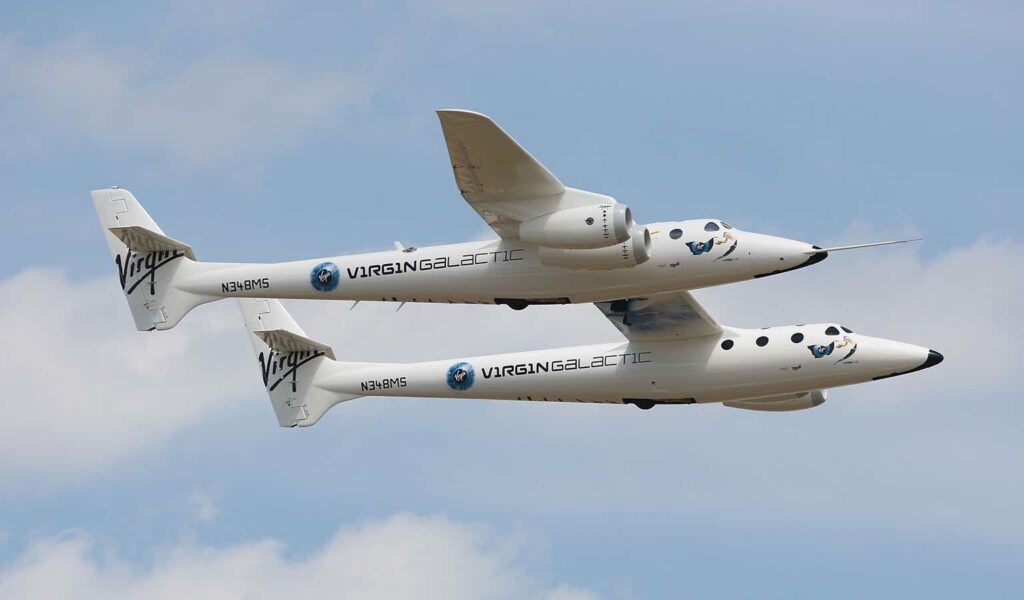As a growth investor with an extensive investment time horizon, it makes sense for me to keep an eye on disruptive business sectors that have nothing to show today in the form of earnings but are well-positioned to change humanity in the long run. This is why I started following the space tourism sector a few years ago as I thought this sector had the necessary ingredients to blossom in the long term – I still do. With technological advancements reshaping the way humans connect, do business, and even travel, the space tourism sector has come a long way in the last few years at a faster pace than I initially projected. Virgin Galactic Holdings, Inc. (NYSE:SPCE), one of the leading drivers of this stellar progress, made a landmark announcement on June 15 to confirm the start of its commercial spaceflight operations. Galactic 01, the first commercial spaceflight, is now scheduled to fly between June 27 and June 30, while the second flight is scheduled for August and monthly flights thereafter. At a time when Virgin Galactic is preparing for its first flight, I thought it best to revisit the “space math” to evaluate whether the company is on the right track to profitability.
Path To Profitability
In my previous Virgin Galactic article last April, I presented a simple calculation to suggest the consensus revenue estimate of $12 million for 2023 was a stretch given that the company will face several challenges once commercial flights begin. At the time, I expected commercial flights to start in July and highlighted that the company could potentially earn revenue of $16.2 million from spaceflights this year in the best-case scenario where Virgin Galactic will operate 6 successful flights carrying 6 passengers in each flight for a fee of $450,000 per passenger. Since then, analysts have lowered their revenue projections for 2023 from $12 million to $9.21 million. The current estimate, in my opinion, is a better reflection of where Virgin Galactic is headed this year given my belief that expecting 6 successful spaceflights in 2023 is asking too much from the company due to the various safety hazards that could come to light once the first flight takes off.
Consensus revenue estimates
Seeking Alpha
Stock prices can fluctuate wildly in the short term based on new product launches, leadership changes, or even for no apparent reason as the demand and supply for a stock take precedence over any other factor. However, in the long term, stock prices will invariably follow corporate earnings, which is why we need to assess whether Virgin Galactic can earn profits in the long term. If so, when can we expect the company to turn profitable? To find answers to these questions, we need to dig deeper into the numbers.
Virgin Galactic is currently charging $450,000 per seat and each flight can carry 6 passengers. According to company filings, the variable operating costs of a flight comes to around $400,000. These costs include the rocket motor which needs to be replaced, fuel costs, customer insurance costs, customer training costs, fleet management costs, and consumables. To be on the safe side, I am modeling $500,000 in variable operating costs per flight, which results in a gross profit of $2.2 million per flight. In Q1 2023, Virgin Galactic reported a net loss of $159 million. Massive R&D costs played a huge part in these losses, and I believe R&D costs will only increase in the next 5 years as the company tries to expand the spaceships available (the company plans to build two Virgin Motherships and 5 Virgin Spaceships). Assuming each flight will bring in $2.2 million in net proceeds for the company – which is a very optimistic forecast – Virgin Galactic will have to complete more than 70 flights per quarter to break even if costs remain at the current level. That comes to more than 20 flights per month. Given that Virgin Galactic’s spaceships are built to complete approximately 1 trip per week, the company needs at least 5 Virgin Spaceships to break even at the current prices and cost structure. Today, the company’s spaceflight system consists of just one spaceship (VSS Unity) and one mothership (VSS Eve). The company is working on its second spaceship, VSS Imagine, but it would be reasonable to assume that it would take at least 3-4 years at best for Virgin to build the required 5 spaceships to be profitable.
By looking at these numbers, one might get the feeling that Virgin Galactic will be able to break even in the next 5 years if it ramps up the production of spaceships. However, this could be a false conclusion. The above numbers are based on carrying 6 passengers in each spaceship, and as we established earlier, the company will have to fly around 20 flights per month to even think about profits. That comes to around 120 passengers per month who are willing to pay $450K. Attracting that many customers, in my opinion, is easier said than done. Let’s look at historical ticket sales to get a better idea.
Before Sir Richard Branson flew to space in July 2021, Virgin Galactic had sold 600 tickets for future space flights at a cost of between $200,000 and $250,000. Soon after Sir Branson’s successful flight, the company increased the cost per seat to $450,000 in anticipation of strong demand for future flights. According to Virgin Galactic’s 2022 Annual Report, future spaceflight revenue is expected at $211 million, which suggests the company has sold around 170 new tickets in almost two years after hiking prices in 2021. This, unfortunately, is a lackluster number when compared to the 120 passengers the company needs to fly every month to become profitable. It would be reasonable to expect a bump in ticket sales once the company completes its first commercial flight later this month, but even then, I believe Virgin Galactic will be forced to increase prices substantially to achieve profitability in the long run. This, in return, will limit its addressable market opportunity.
By any stretch of the imagination, Virgin Galactic is not going to be profitable at least until 2026, if at all. The company can and will generate revenue from a few other avenues as well such as by selling optional luxury experiences to customers, microgravity research services, and commercial astronaut training, but the company’s main source of revenue will always be commercial flights. For this reason, I analyzed the profitability potential of this business segment in this analysis.
Takeaway
Virgin Galactic is a very exciting company to closely monitor as a growth investor. I believe the company will change humanity forever by being part of an elite few companies that would commercialize space exploration, thereby paving humanity to reach heights that were previously not heard of. That being said, investing in Virgin Galactic stock today carries a risk-reward profile similar to gambling. For this reason, I will remain on the sidelines.
Read the full article here













